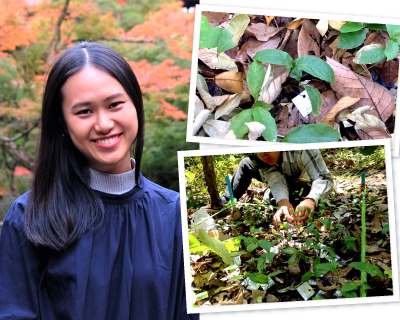Research News
Oct 28, 2022
El Niño increases seedling mortality even in drought-tolerant forests
A long-term study finds that seedling mortality increased when severe and prolonged drought occurred in Southeast Asian seasonally dry tropical forests, which are deemed more drought-tolerant than tropical rainforests.
Global climate change may lead to more extreme weather events such as droughts. To predict the impact of climate change on tropical forests, it is necessary to understand more accurately the effects of drought. El Niño often reduces rainfall and causes drier forests in the tropical regions of Southeast Asia. Since tropical rainforests there usually experience rainfall year-round with no dry season, El Niño-induced drought increases tree mortality. Seasonally dry tropical forests (SDTFs), on the other hand, are considered more adaptive to drought given that they experience both wet and dry seasons. However, there remains limited understanding about the effects of El Niño on SDTFs.
Addressing this knowledge gap, a research team led by graduate student Prapawadee Nutiprapun, from the Graduate School of Science at Osaka City University, Professor Akira Itoh, from the Graduate School of Science at Osaka Metropolitan University, and Professor Dokrak Marod, from the Faculty of Forestry at Kasetsart University, monitored seedling recruitment and mortality at an SDTF in a national park in Chiang Mai, in northern Thailand, at monthly intervals for 7 years.
Scientists conducted a long-term study to evaluate the effects of El Niño on seasonally dry tropical forests. Data collected over 7 years show that seedling mortality increased when severe and prolonged drought occurred in seasonally dry tropical forests, which are deemed more drought-tolerant than tropical rainforests. The mortality rate was greater in evergreen forests at higher elevations that typically experience less drought than in deciduous forests at lower elevations that experience severe drought more frequently.

During the study period, an extremely strong El Niño event occurred between 2014 and 2016, resulting in reduced rainfall. In 2016, the dry season was approximately 3 months longer than normal. The collected data show that severe and prolonged drought increased seedling mortality even in the SDTF. In addition, drought-caused mortality was greater in evergreen forests at higher elevations, where drought is usually less severe, than in deciduous forests at lower elevations, where severe drought is more frequently observed.
Only in deciduous forests did the number of seedlings increase significantly during the El Niño period. This was mainly due to a large number of acorns produced by the deciduous oak Quercus brandisiana (Fagaceae). El Niño has been known to stimulate mass flowering and fruiting, leading to an increase in seedlings in tropical rainforests in Southeast Asia.
“This study takes us one step closer to understanding the impact of El Niño on seasonally dry tropical forests in Southeast Asia,” said Ms. Nutiprapun.
“A decline in the number of seedlings that carry the next generation will affect the entire forest in the long run,” concluded Professor Itoh. “We believe that we have obtained useful basic knowledge to develop measures to conserve tropical forest ecosystems in consideration of future climate change.”
Paper Information
Title: Effects of El Niño drought on seedling dynamics in a seasonally dry tropical forest in northern Thailand.
Journal: Global Change Biology
DOI: 10.1111/gcb.16466
Author: Prapawadee Nutiprapun, Sutheera Hermhuk, Satoshi Nanami, Akira Itoh, Mamoru Kanzaki and Dokrak Marod
URL: https://www.doi.org/10.1111/gcb.16466
Contribution to SDGs

13: Climate action
15: Life on land
Contact
Graduate School of Science
Prof. Akira ITOH
E-mail: itoha[at]omu.ac.jp
*Please change [at] to @.
SDGs

